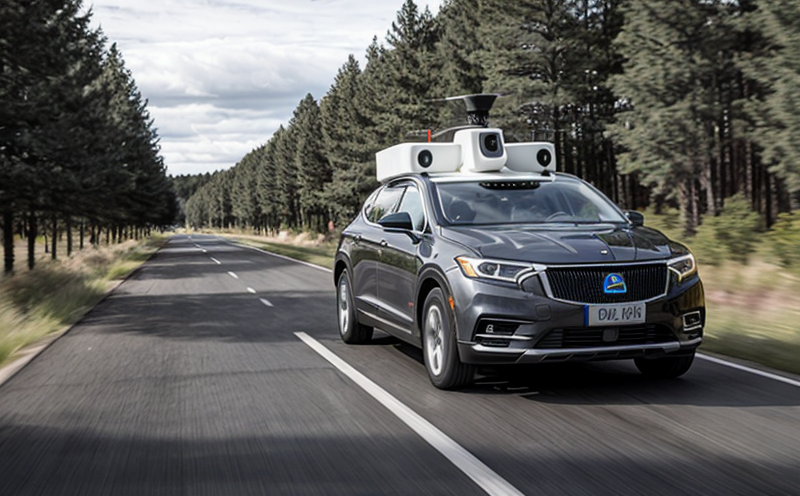EN 61800-5-2 Safety Functions of Motor Drives in Mobile Robots
The European Standard IEC/EN 61800-5-2 is a critical document for ensuring the safety of motor drives used in mobile robots. This standard addresses the specific requirements for the design, testing, and validation of safety functions aimed at preventing accidents or injuries due to unexpected behavior of autonomous systems.
The scope of EN 61800-5-2 extends beyond just hardware; it encompasses the entire lifecycle of motor drives in mobile robots. This includes initial design phases where engineers must consider potential risks associated with moving parts and electrical components, through to installation, commissioning, operation, maintenance, and decommissioning.
One key aspect is the evaluation of safety functions such as emergency stop mechanisms, overcurrent protection, overheating detection, and other protective measures. These safety features are crucial for preventing accidents in environments where mobile robots operate near humans or in hazardous conditions.
The standard provides detailed guidance on how to assess these functions through rigorous testing protocols. It outlines the specific test methods required to verify that each safety function operates correctly under various scenarios, including fault conditions and extreme operating conditions. For instance, it specifies how to simulate unexpected faults in motor drives using controlled test setups.
Another important point is the importance of redundancy in critical systems. EN 61800-5-2 emphasizes the need for multiple layers of protection to ensure that even if one safety mechanism fails, others remain intact and capable of halting hazardous behavior. This approach is particularly relevant given the complexity and autonomy often present in modern mobile robots.
Testing according to this standard involves not only laboratory simulations but also real-world deployments where the safety functions can be thoroughly observed under realistic operating conditions. Compliance with EN 61800-5-2 ensures that manufacturers meet international standards for safety, which is essential for gaining market access and building consumer trust.
Given its comprehensive coverage of motor drive safety in mobile robots, this standard plays a pivotal role in safeguarding both the integrity of autonomous systems and those who interact with them. By adhering to EN 61800-5-2, manufacturers can demonstrate their commitment to high standards of engineering practice.
To summarize, EN 61800-5-2 is a vital tool for ensuring that motor drives in mobile robots are safe and reliable. Its detailed specifications provide a robust framework for testing and validating safety functions, thereby enhancing overall system performance and reducing the risk of accidents or injuries.
Why It Matters
The implementation of EN 61800-5-2 is essential for several reasons. First and foremost, it ensures that mobile robots equipped with motor drives operate safely in environments where they interact closely with humans. This is particularly important in applications such as healthcare robotics, industrial automation, and public service bots.
Secondly, compliance with this standard helps manufacturers meet regulatory requirements in different regions across the globe. Many countries adopt international standards like EN 61800-5-2 to ensure a consistent level of safety across borders.
The standard also promotes innovation by providing clear guidelines for testing and validating new safety functions. As technology evolves, developers can rely on established protocols to incorporate advanced features while maintaining robust safety measures.
Moreover, compliance with EN 61800-5-2 fosters trust among end-users who require assurance that the products they use are reliable and meet stringent safety criteria. This is especially true in sectors like healthcare where patient safety is paramount.
In summary, adherence to this standard is crucial for manufacturers looking to design safe, efficient, and compliant mobile robots. By doing so, they not only protect users but also position themselves as leaders in the industry.
Benefits
- Enhanced Safety: Ensures that motor drives function reliably under all operating conditions to prevent accidents or injuries.
- Regulatory Compliance: Meets international standards, facilitating market access and reducing the risk of non-compliance penalties.
- Innovation Support: Provides a structured approach for testing new safety functions, encouraging technological advancements without compromising safety.
- User Trust: Establishes confidence among end-users regarding the reliability and safety of mobile robots in their applications.
The benefits extend beyond mere compliance; they contribute to creating safer environments where autonomous systems can operate effectively. This not only protects users but also enhances the reputation of manufacturers as leaders in safe technological innovation.
Quality and Reliability Assurance
Ensuring quality and reliability in mobile robots is paramount, especially when it comes to motor drives that power these systems. Testing according to EN 61800-5-2 involves several key aspects:
- Testing Protocols: Rigorous testing protocols are defined for each safety function to ensure they operate correctly under various conditions.
- Redundancy Evaluation: Multiple layers of protection must be tested to confirm that, in the event of a failure, other protective measures remain effective.
- Real-World Simulations: Tests are conducted not only in controlled laboratory settings but also in real-world environments where mobile robots operate under actual conditions.
In addition to these testing procedures, continuous monitoring and periodic re-evaluation of safety functions are recommended. This ensures that as the technology evolves, so does the level of protection provided by motor drives.
By adhering strictly to EN 61800-5-2, manufacturers can demonstrate their commitment to quality and reliability, which is essential for maintaining trust with customers and regulatory bodies alike.





